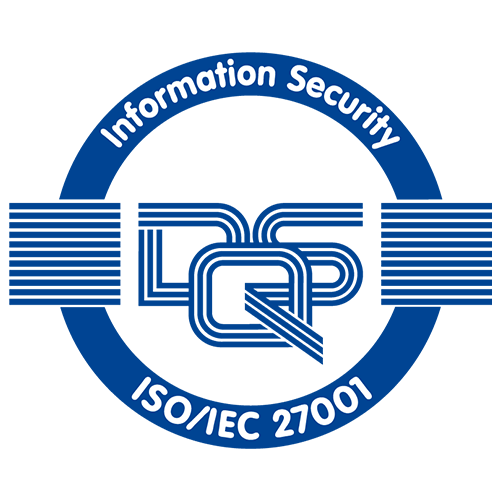Even before the pandemic, there was a heightened interest in digital financial services from people across the world and of differing backgrounds. That meant a steady and sustained increase in business for many financial services companies. But are these same companies equipped to manage this influx of business, information, and more?
To prepare themselves, many companies are increasing their digital agility by adopting tools such as data analytics, IoT, and AI. For instance, reports have estimated that the global IoT in the BFSI market is estimated to hit USD 2,030 million by 2023.
Let’s understand what has motivated so many to join this trend, and what you’ll be missing out on if you don’t.
What is Digital Agility? 
Let’s first understand what digital agility is. It’s a subdivision of business agility that describes how well an enterprise can adapt to change by leveraging the power of digital technologies.
In a sense, this agility is a company’s ability to compete and do well in the digital age by rapidly responding to market changes. These companies also focus on emerging opportunities to innovate digitally-enabled business solutions and deliver them quickly. This requires that everyone that’s involved in delivering solutions must use Lean and Agile practices. By doing so, they’d be able to deliver innovative, high-quality products and services fast and go-to-market faster than their competition. This is for leaders in business and tech, those in development, IT operations, marketing and finance, the legal department, compliance, security, and more.
Digital agility encompasses the tools, processes, and software an organization uses to perform the functions with agility. It aims to make an organization faster and more efficient at enabling changes, updates, and new processes. To be agile digitally, tools need to be flexible, easy-to-use, and dynamic. That will enable employees to change their existing processes in the right way. They will be able to create new workflows, especially in times of crisis.
Why Do Financial Companies Need to be Digitally Agile? 
There are many benefits to being digitally agile. These past few years have taught us that more than anything else. Flexibility and agility proved to be indispensable in tough times when one has to adapt to keep up with business, keep customers, and beat the competition. Digital agility helps financial companies:
-
Reduce their time to market.
-
Reduce costs.
-
Innovate quickly.
-
Stay competitive in a marketplace that’s ever-evolving.
-
Boost digital transformation initiatives in general.
-
Build on existing infrastructure.
How Can You Achieve Digital Agility? 
-
Microservices
Truly agile enterprises often have microservices at their core. This approach helps application development in financial enterprises by breaking down software into several loosely-coupled components. That’s makes it easy to deploy and maintain. A modular approach makes sure all core functions seamlessly work together. Those features help speed up development and enable businesses to build quickly. They can also get to market faster than other companies. These are also helpful for scaling up and down as per your needs, without depleting your resources to a large extent. Changes can be made faster and without affecting the rest of the system. Developers will be able to experiment with app development, introduce new financial services, and more. Microservices let developers repeat the process of refining apps and increasing utility as financial enterprises push digital transformation.
Building applications that are microservices-based and open-source can mean more flexibility, efficiency, and cost-effectiveness. That way, financial companies can respond to market demands more proactively. They’ll be able to develop enabling applications in a far more enabling way. With microservices, applications can be broken down into smaller pieces.
-
Automation
Agile enterprises mean all members must leverage technologies that will help them maximize the impact of their effort and time. They’ll be able to spend less time on repetitive tasks, more on value-adding projects, and other means to push your business forward. Banks and financial companies will be able to reduce their manual efforts significantly, offer better compliance, mitigate the risks, and enhance their overall consumer experiences. Automation can help in report generation, client onboarding process, opening accounts, lending mortgages, processing loans, and more. The benefits would include:
-
Easier, faster, and more efficient scaling capabilities.
-
Increased operational efficiency.
-
Cost-effectiveness.
-
Risk and compliance reporting.
-
Availability.
-
Faster implementation.
-
Business growth with legacy data.
By automating more processes, financial institutions would be able to focus on the things that matter to them. Those that would help maximize processes faster and drive efficiency to greater heights, all while keeping your customer’s best interests in mind.
-
-
Integrations
Enterprise-grade integrations are needed to achieve digital agility that spans functions, departments, systems, and databases. Today’s customers want to use different services from a single point/web application. The most successful enterprises stay competitive by using digital technology to provide a seamless omnichannel experience. Companies must use the best software approaches and products to ensure these integrations are seamless and will be able to stand heavy process usage. Speed and value-deliveries help balance your portfolio, and you’ll be able to connect disparate systems without any glitches. You’ll be able to gain visibility and give everyone the metrics and insights needed to make data-driven decisions that will power your solutions.
Just by using these three processes, financial institutions be able to increase their digital agility by manifold. Given the direction of the market, if you haven’t started your journey already, you must start now.


